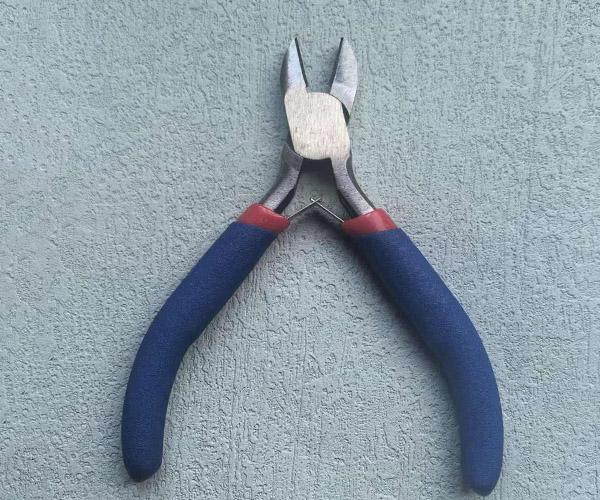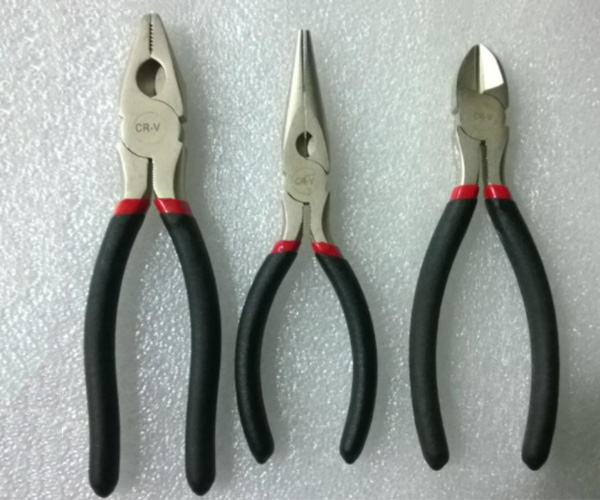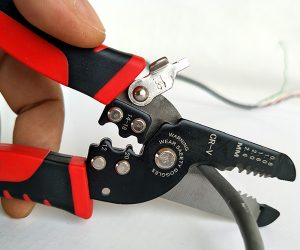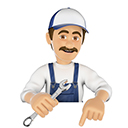In the world of hand tools, pliers play a crucial role in various industries. As a manufacturer, ensuring the quality of these essential tools can make all the difference for professionals relying on them every day. So, what makes a pliers manufacturer truly reliable? In this article, we’ll explore why choosing a trusted pliers manufacturer is vital for businesses and individuals alike, providing insights into what makes Kolarwin Tools stand out from the competition.
1. Why are Pliers Essential Hand Tools in Various Industries?
Pliers are one of the most versatile hand tools used across a variety of industries. From construction and automotive work to electronics and DIY tasks, pliers are indispensable. But here’s the kicker: the effectiveness of these tools hinges on the precision and durability of their design and manufacturing.
Pliers come in different shapes and sizes, each tailored to specific tasks. For instance, needle-nose pliers are commonly used in electrical work to grip small objects or bend wires in tight spaces, while locking pliers are perfect for holding objects firmly in place. A high-quality set of pliers is essential for both safety and efficiency in these environments.
Moreover, industries that deal with fine craftsmanship, like jewelry making or precision engineering, require pliers that offer the utmost precision. Poor-quality tools not only slow down work but can also compromise safety and the integrity of projects. Ready for the good part? High-quality pliers can actually improve efficiency by making tasks faster, safer, and more accurate.
As businesses look for manufacturers to meet their needs, they often prioritize quality and consistency. For example, companies that use pliers in production lines require tools that can endure heavy usage without wear and tear. The reliability of a pliers manufacturer plays a direct role in the long-term success of these businesses.
| Industry Use | Pliers Type | Purpose |
|---|---|---|
| Automotive | Locking Pliers | Holding parts in place while working |
| Electronics | Needle Nose Pliers | Gripping small components |
| Jewelry | Flat Nose Pliers | Shaping and bending wires |
2. What Makes a Pliers Manufacturer Reliable?
Reliability in a pliers manufacturer is built on several key factors. First, let’s talk about quality control. What’s the real story? For a manufacturer to be deemed reliable, they must have stringent quality checks in place to ensure their products meet specific standards.
A reliable pliers manufacturer pays close attention to the materials used. High-quality steel, for instance, ensures that the pliers are durable, rust-resistant, and capable of withstanding the wear and tear of regular use. Additionally, manufacturers must use the latest technology and machinery to create pliers that are not only functional but also ergonomic, making them comfortable to use over long periods.
Another aspect to consider is customer support. A manufacturer that stands by its products will offer excellent customer service, including warranties and responsive communication channels. This is especially important for B2B relationships, where businesses rely on timely delivery and after-sales support. If a manufacturer can’t deliver on these aspects, they risk losing the trust of their clients.
What’s more? Transparent communication is key. Manufacturers who provide detailed information about their production process, material sourcing, and testing protocols are more likely to be trusted by wholesalers and distributors. By ensuring consistency and addressing issues proactively, they can build a long-lasting reputation.
| Quality Factor | Importance | Example |
|---|---|---|
| Material Selection | Durability and longevity of the product | High-carbon steel |
| Manufacturing Process | Precision and ergonomics | Advanced CNC machines |
| Customer Support | Ensuring after-sales service and support | 24/7 hotline and warranty |
3. How Do Pliers Hand Tools Benefit Professionals?
For professionals, choosing the right set of pliers is crucial for daily tasks. So, what are the benefits of using high-quality pliers? It’s simple: better efficiency, safety, and comfort.
Professionals like electricians, mechanics, and carpenters often use pliers for tasks that require a strong grip, precise movement, and reliability. High-quality pliers allow them to complete their work with ease, reducing the time spent on each task. For example, electricians rely on needle-nose pliers to work in tight spaces, bending and cutting wires with precision. With the right tool, these tasks can be completed quickly and safely.
Moreover, high-quality pliers are designed to reduce hand strain, thanks to ergonomic handles that improve grip and comfort. This is especially important for professionals who use pliers frequently throughout the day. The reduced strain on hands and wrists minimizes the risk of repetitive stress injuries, making high-quality tools an investment in the well-being of workers.
Ready for the good part? The best pliers offer more than just basic functionality. They are designed to provide professionals with added features such as comfort grips, non-slip handles, and rust resistance, all of which contribute to a longer lifespan for the tool and better performance over time.
| Professional Use | Pliers Type | Benefits |
|---|---|---|
| Electricians | Needle Nose Pliers | Precision and ease in tight spaces |
| Mechanics | Slip Joint Pliers | Adjustability and grip strength |
| Carpenters | Diagonal Pliers | Clean cuts and durability |

4. What Are the Different Types of Pliers Hand Tools?
When it comes to pliers, one size does not fit all. So, how do you choose the right pliers for the job? It all comes down to the type of task at hand.
There are many different types of pliers, each designed for specific tasks. For instance, combination pliers are one of the most versatile types, used for gripping, bending, and cutting. They are ideal for general use and can be found in most toolboxes. On the other hand, cutting pliers are specifically designed to cut wires and cables, making them perfect for electrical work.
If you’re working in tight spaces, needle-nose pliers are the way to go. Their long, thin jaws make them perfect for gripping small objects or performing delicate work. What’s the real story? These pliers are often used in electronics and jewelry making, where precision is key.
Locking pliers, often referred to as “vise grips,” are another essential tool. These pliers can lock into place to hold objects securely, making them perfect for welding, plumbing, and automotive repairs. Each type of pliers is built for a different task, and understanding the difference can make a huge difference in productivity and safety.
| Pliers Type | Key Feature | Best Use |
|---|---|---|
| Combination Pliers | Multi-functional | General use |
| Cutting Pliers | Sharp blades | Electrical work |
| Needle Nose Pliers | Long, thin jaws | Tight spaces, precision |
| Locking Pliers | Locking mechanism | Automotive, welding |
5. How Can You Ensure the Quality of Pliers?
Ensuring the quality of pliers is not just about the price tag—it’s about knowing what to look for. So, what should you consider when evaluating pliers?
First, the material is crucial. The best pliers are made from high-carbon steel, which is both durable and resistant to wear and tear. High-carbon steel pliers hold their edge better than softer metals, making them ideal for precision tasks that require repeated use. Additionally, the coating on pliers plays a role in preventing rust and corrosion, especially in environments exposed to moisture or chemicals.
Next, you need to consider the construction. Well-made pliers should have tightly fitted joints to ensure smooth operation. Any wobble or movement in the handles or jaws can reduce the tool’s effectiveness and safety. When buying pliers, it’s a good idea to test their operation before purchase. Ensure that the handles are ergonomic, providing comfort during prolonged use.
But here’s the kicker: checking the warranty and customer reviews is also essential. A reputable manufacturer will stand behind their products with a solid warranty and offer strong customer support. This provides peace of mind that the pliers are backed by the manufacturer’s confidence in their quality.
| Quality Factor | Importance | Example |
|---|---|---|
| Material | Durability and rust resistance | High-carbon steel |
| Construction | Ensures smooth operation | Tight-fitted joints |
| Customer Reviews | Trustworthiness of the manufacturer | Excellent feedback |
6. Why Should You Choose an OEM Pliers Manufacturer?
Choosing an Original Equipment Manufacturer (OEM) for pliers offers several advantages over standard retail tools. But wait, there’s more: with an OEM manufacturer, you can customize your pliers to fit your specific needs.
OEM manufacturers allow businesses to request custom-made tools tailored to specific tasks or industries. For instance, an automotive company may need pliers with a particular grip strength or a unique jaw shape. With an OEM manufacturer, they can get precisely what they need. Moreover, OEM manufacturers often offer high-quality tools that are built to last, giving businesses peace of mind knowing their investment will withstand the rigors of daily use.
What’s more? OEM manufacturers typically offer competitive pricing and better customer service. Because these manufacturers often work directly with businesses, they are more flexible in addressing unique needs, timelines, and order sizes. Customization, durability, and service are what make OEM pliers a preferred choice for many.
| Advantage | Benefit | Example |
|---|---|---|
| Customization | Tailor tools to specific needs | Customized jaw shapes |
| Durability | High-quality tools that last | Steel reinforced handles |
| Customer Support | Direct communication with manufacturer | Faster problem resolution |
7. What Makes Kolarwin Tools Different from Other Pliers Manufacturers?
When choosing a pliers manufacturer, what sets Kolarwin Tools apart? It’s not just about making great tools—it’s about making tools that deliver outstanding performance for professionals in various industries. So, let’s break down the key factors that make Kolarwin Tools a preferred manufacturer for many.
First and foremost, Kolarwin Tools is known for its commitment to high-quality production standards. From the materials used to the manufacturing process, everything is designed with durability and precision in mind. The company utilizes advanced technology and testing methods to ensure that every pair of pliers meets the highest standards of quality. This ensures that professionals can rely on their tools in even the most demanding conditions.
What’s the real story here? Kolarwin’s attention to detail doesn’t stop at quality control. The company also places a strong emphasis on customer satisfaction. They provide tailored solutions for businesses, offering custom-made pliers that meet specific requirements. Whether it’s a particular jaw shape, handle design, or functionality, Kolarwin is ready to accommodate special requests.
Kolarwin Tools also offers competitive pricing without compromising on quality. Their pricing structure ensures that businesses, large and small, can access high-quality pliers at affordable rates. By streamlining their production process and maintaining strong relationships with suppliers, Kolarwin can offer cost-effective solutions that don’t cut corners.
| Feature | Kolarwin Tools Benefit | Example |
|---|---|---|
| Quality Control | Rigorous testing and precision | Advanced CNC machines |
| Customization | Tailored to specific needs | Custom jaw shapes |
| Pricing | Competitive without compromising quality | Cost-effective for bulk orders |
8. What Factors Influence the Price of Pliers Hand Tools?
Understanding the pricing of pliers is crucial for businesses looking to make smart purchasing decisions. So, how does the price of pliers get determined? Let’s dive into the key factors that influence pricing in the pliers industry.
Material is one of the most significant factors influencing the cost of pliers. High-carbon steel or other specialized alloys can drive up production costs, but they also result in a higher-quality, longer-lasting tool. Similarly, if a manufacturer uses stainless steel, the cost may be higher due to its rust-resistant properties, which are essential for tools used in moist environments.
The manufacturing process also affects the price. Placing precision and quality into every pliers tool can involve advanced machinery and intricate processes, increasing labor costs and production time. These costs get passed on to the consumer, but the benefits are clear: you’re getting a tool that is built to last and perform optimally.
But here’s the kicker: shipping and import fees also contribute to the price. Companies that import pliers may face high shipping fees depending on the location, which can affect the final price of the product. It’s essential to consider all these factors when making a purchasing decision, as they directly impact the quality and longevity of the tools you’re investing in.
| Factor | Influence on Price | Example |
|---|---|---|
| Material | Premium materials increase cost | High-carbon steel, stainless steel |
| Manufacturing Process | Precision adds to labor costs | CNC machining for precision |
| Shipping and Fees | Additional costs for imports | International shipping |
9. How Can I Choose the Right Pliers for My Business or Project?
Choosing the right pliers for your specific needs is crucial. Whether you’re in construction, automotive, or electronics, selecting the correct tool can make all the difference in terms of performance and safety. But what do you need to consider when making that choice?
First, identify the type of work you’re doing. If your project involves heavy-duty gripping and holding, locking pliers may be the right choice. For finer, more detailed work such as wire bending or cutting, needle-nose pliers are ideal. Understanding the task at hand allows you to narrow down the options and find the tool that’s best suited for the job.
Next, consider the comfort and ergonomics of the tool. Professionals who use pliers daily should opt for ergonomic handles that reduce strain and improve grip. Tools with cushioned, non-slip handles can help prevent hand fatigue during prolonged use.
What’s more? Think about the durability of the tool. If your business requires pliers that will stand up to constant use in tough environments, you should focus on tools made from high-quality, corrosion-resistant materials. This will help you avoid the cost and hassle of frequently replacing your tools.
| Consideration | What to Look For | Example |
|---|---|---|
| Task Type | Choose pliers suited for the work | Locking, needle-nose |
| Ergonomics | Comfortable, non-slip handles | Cushion grips, padded handles |
| Durability | Corrosion-resistant material | Stainless steel, high-carbon steel |
10. What Are the Benefits of Bulk Ordering Pliers from a Manufacturer?
When it comes to buying pliers for your business, purchasing in bulk offers a range of benefits. So, why should you consider bulk ordering? Let’s take a closer look.
First off, bulk ordering often comes with significant cost savings. Manufacturers typically offer discounts for larger orders, helping businesses save money. This is particularly beneficial for companies that need to stock up on tools for large projects or ongoing operations. The more units you purchase, the lower the per-unit price becomes, making bulk buying a smart choice for businesses looking to reduce costs.
Another advantage is consistency. Ordering pliers in bulk ensures that all the tools you receive are from the same batch, which guarantees uniform quality and performance. This is essential for businesses that rely on their tools being consistent and reliable across multiple jobs or locations.
Ready for the good part? Bulk orders also simplify inventory management. By buying in large quantities, businesses can avoid frequent restocking, saving time and effort on supply chain management. Plus, you won’t have to worry about running out of pliers in the middle of a project, ensuring that your team always has the right tools available.
| Benefit | Advantage | Example |
|---|---|---|
| Cost Savings | Lower per-unit price | Bulk order discounts |
| Consistency | Uniformity in product quality | Same batch production |
| Inventory Management | Less frequent restocking | Streamlined supply chain |
11. How Does Pliers Customization Work with OEM Manufacturers?
When it comes to OEM manufacturers, customization is one of the standout features. So, how does customization work, and why is it beneficial for businesses?
OEM manufacturers allow businesses to create pliers that fit their specific needs. Whether it’s altering the size of the jaw, adding a particular coating for rust resistance, or modifying the handle for extra grip, customization enables companies to get tools that are tailored to their unique requirements.
What’s more? Customization can also include branding options, allowing businesses to add their logo or company name to the pliers. This helps create a professional image and makes the tools easily recognizable as part of the business’s operations. Customized tools not only provide functional benefits but also help with branding and marketing efforts.
Additionally, businesses that work in specialized fields can request tools that are designed for specific tasks. For example, an automotive repair shop might need pliers with extended jaws to reach difficult areas in an engine. OEM manufacturers can provide tools that are built to meet these particular needs, ensuring maximum efficiency on the job.
| Customization Option | Benefit | Example |
|---|---|---|
| Tool Size | Tailor tools to specific tasks | Extended jaw for engines |
| Branding | Enhance business visibility | Company logo on handles |
| Special Features | Add ergonomic or functional designs | Non-slip grip for comfort |
12. What Are the Safety Considerations When Using Pliers?
Safety is always a priority when working with tools, and pliers are no exception. But here’s the kicker: knowing how to use pliers correctly is just as important as having the right tool.
First, always inspect your pliers before use. Ensure that the jaws are aligned properly and that the handles are not cracked or damaged. Damaged tools can lead to accidents, so regular checks are essential. Additionally, using pliers with ergonomic handles reduces hand fatigue and improves control, decreasing the risk of accidental injury.
When using pliers, always focus on maintaining a firm grip. Slippery or poorly gripped pliers can slip during use, potentially causing injury. If you’re working with wires or small components, make sure the tool’s jaws are clean and free from debris to maintain a secure grip.
Finally, never use pliers for tasks they are not designed for. Using the wrong tool can cause damage to the pliers, and worse, lead to injury. For example, using pliers to pry open an object can result in the tool slipping or breaking.
| Safety Tip | Importance | Example |
|---|---|---|
| Inspect Tools | Prevent accidents with damaged tools | Check for cracks or wear |
| Grip and Control | Reduce slippage and improve safety | Ensure ergonomic handles |
| Correct Tool Usage | Avoid using pliers for non-specific tasks | Use cutting pliers for wires |

13. How Do Pliers Contribute to Overall Toolset Efficiency?
Pliers are a staple in every toolset, but how do they contribute to overall efficiency? So, let’s look at how this often-overlooked tool can actually boost your productivity.
Pliers, with their versatility, allow workers to tackle multiple tasks using a single tool. From gripping and bending to cutting, pliers eliminate the need for switching between various tools, saving time and effort. This reduces downtime and helps workers stay focused on the task at hand, ultimately leading to higher productivity.
What’s more? When you have a reliable set of pliers, you spend less time on repairs or searching for replacements. High-quality pliers can withstand regular use, reducing the frequency of tool replacement and maintenance. This not only saves money but also ensures that your team always has access to functional tools when needed.
And the best part? With pliers, tasks that might have taken longer with other tools can be completed more efficiently. Whether it’s electrical work, automotive repair, or DIY projects, pliers enhance the speed and accuracy of the job, making them an invaluable part of any toolkit.
| Efficiency Factor | Benefit | Example |
|---|---|---|
| Time-saving | One tool for multiple tasks | Cutting, gripping, bending |
| Durability | Fewer replacements needed | Long-lasting steel tools |
| Speed and Accuracy | Faster, more precise work | Quick bending and cutting |
14. What Are the Top Trends in Pliers Hand Tools?
The hand tool industry is constantly evolving, and pliers are no exception. So, what are the latest trends in pliers design and functionality?
Ergonomic design is one of the biggest trends in pliers manufacturing. As more professionals look for ways to reduce hand fatigue and improve comfort during long work sessions, manufacturers are designing pliers with softer, more comfortable handles. This design allows for a firmer grip and reduces strain on the user’s hands and wrists.
What’s more? Pliers are also becoming more specialized, with many manufacturers offering tools that are tailored to specific tasks. For example, electrical pliers now come with features like insulation to prevent electric shocks. Innovations like these make pliers more versatile and safer for professionals.
Additionally, there’s a growing focus on sustainability. Eco-friendly manufacturing processes and materials are becoming more popular as manufacturers aim to reduce their environmental footprint. As a result, we’re seeing the rise of tools made with recycled materials or those that are easier to recycle once they reach the end of their life cycle.
| Trend | Impact | Example |
|---|---|---|
| Ergonomic Design | Improved comfort and grip | Cushion grip handles |
| Specialization | Tools for specific industries | Insulated electrical pliers |
| Sustainability | Eco-friendly materials and processes | Recycled tool materials |
15. How Do I Properly Maintain My Pliers to Extend Their Lifespan?
Maintaining your pliers properly is key to ensuring their longevity. What’s the secret to making sure they last for years?
First, always clean your pliers after each use. Dirt and debris can cause rust and corrosion, which can damage the tool. Regular cleaning with a cloth and mild soap will keep the tool in top condition. If you use pliers in environments with moisture or chemicals, make sure to dry them off thoroughly after use to prevent rust.
Next, lubricate your pliers regularly. A small amount of oil on the pivot point will ensure that the tool operates smoothly and prevent the handles from becoming stiff or squeaky. You can use a light machine oil or silicone lubricant for this purpose.
What’s the real story? Storing your pliers properly also plays a significant role in their lifespan. Keep them in a dry place away from extreme temperatures or humidity. Using a tool rack or box will help keep them safe and prevent accidental damage.
| Maintenance Tip | Benefit | Example |
|---|---|---|
| Regular Cleaning | Prevent rust and debris buildup | Wipe down with cloth after use |
| Lubrication | Ensure smooth operation | Use light oil on pivot points |
| Proper Storage | Avoid damage and corrosion | Store in dry, cool place |
Conclusion
In conclusion, reliable pliers manufacturers play a crucial role in providing the right tools for professionals across various industries. Whether it’s choosing the right type of pliers, ensuring their quality, or understanding the benefits of custom solutions, businesses need to make informed decisions when purchasing pliers. Kolarwin Tools stands out with its commitment to high-quality, customized solutions that meet the unique needs of every customer. By following best practices in choosing and maintaining pliers, businesses can enhance productivity, improve safety, and ensure the longevity of their tools.
FAQ
Q1: What is a pliers hand tool?
Pliers are hand tools used for gripping, bending, and cutting. They come in various shapes and sizes to handle specific tasks in industries like construction, electrical work, and DIY projects.
Q2: How do pliers work?
Pliers work by using two metal arms to create a lever action, allowing the user to grasp, twist, or cut objects with precision and force.
Q3: What are the benefits of using professional-grade pliers?
Professional-grade pliers offer superior durability, precision, and safety, making them more reliable for heavy-duty tasks and ensuring better results in demanding environments.
Q4: How do I choose the right pliers for my project?
When selecting pliers, consider the task at hand, the material you’re working with, and the pliers’ design. Make sure to choose tools that are specifically suited for your work, such as cutting, gripping, or bending.
Q5: How can I ensure my pliers last longer?
Proper maintenance, such as cleaning, lubricating, and storing pliers correctly, can significantly extend their lifespan. Regular inspection for damage or wear is also important to keep them functional.





